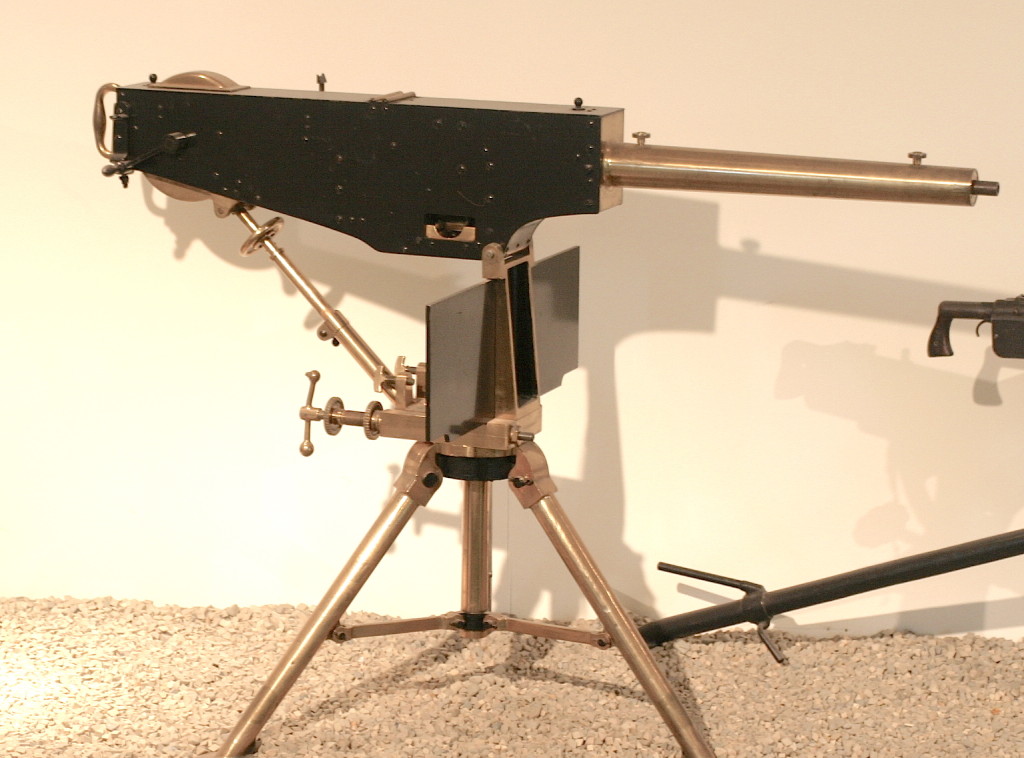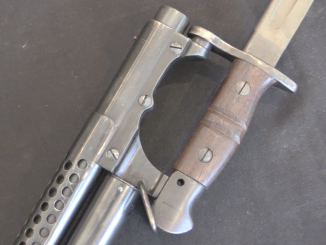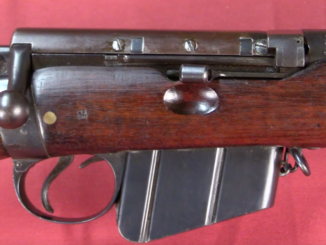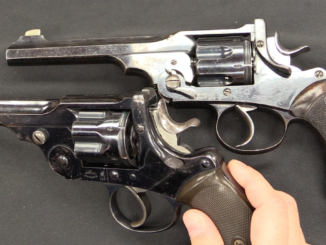I am going to start an intermittent series of posts on the various different types of Maxim machine guns over the next few months – there are a whole slew of them, and I have good photos of a bunch of different variants. Hopefully it will be a good reference for both production history and identification – and it will begin with the first practical machine gun Hiram Maxim made: his “Prototype”.
Maxim began his experiments into self-loading firearms with a patent for converting a Winchester lever action into a self-loading arm, and we will address that particular gun at another time. His next step was a gun he called the “Forerunner”, which used a proprietary piston-primer type of ammunition and a hydraulic buffer system – we will also save discussion of that developmental dead end for another day.
On January 3, 1884 Maxim filed a patent covering 12 different claims relating to automatic firearms, the broadest one literally covering any use of gas pressure being used to operate the mechanism of a gun (he would later spend a lot of time fighting patent infringement claims, not surprisingly). At this time, Maxim had a workshop at 57D Hatton Garden, London, where he built his guns. The first Prototype was a clever and creative gun, built with inspiration from Maxim’s own ideas and from existing manually operated guns, most significantly the Gardner (from which Maxim took a variation on the flywheel connected to the bolt mechanism).
The very first example gun had a unique trigger mechanism which was actually a swinging lever which would both fire the gun and control the rate of fire – which could be as high as 600 rounds/minute and as low as 1 or 2 rounds/minute. This was done by the lever adjusting the mainspring tension. The rearward travel of the bolt mechanism was absorbed by connecting it to a rotating bell crank, although early experiments showed that having the crank rotate continuously in one direction caused the system to speed up uncontrollably, so the working version of the gun had a crank which would rotating about 270 degrees with each shot, and then reverse direction. This was connected to a handle for manual cycling, and when firing this handle would whip back and forth at high speed.
In a somewhat humorous side note, at some of Maxim’s early demonstrations, observers would assume that this handle was used to fire the gun like a Gardner or Gatling and express skepticism that it could be spun by hand at Maxim’s claimed 600 rpm – only to be quite taken aback by the blur of motion when the gun was fired.
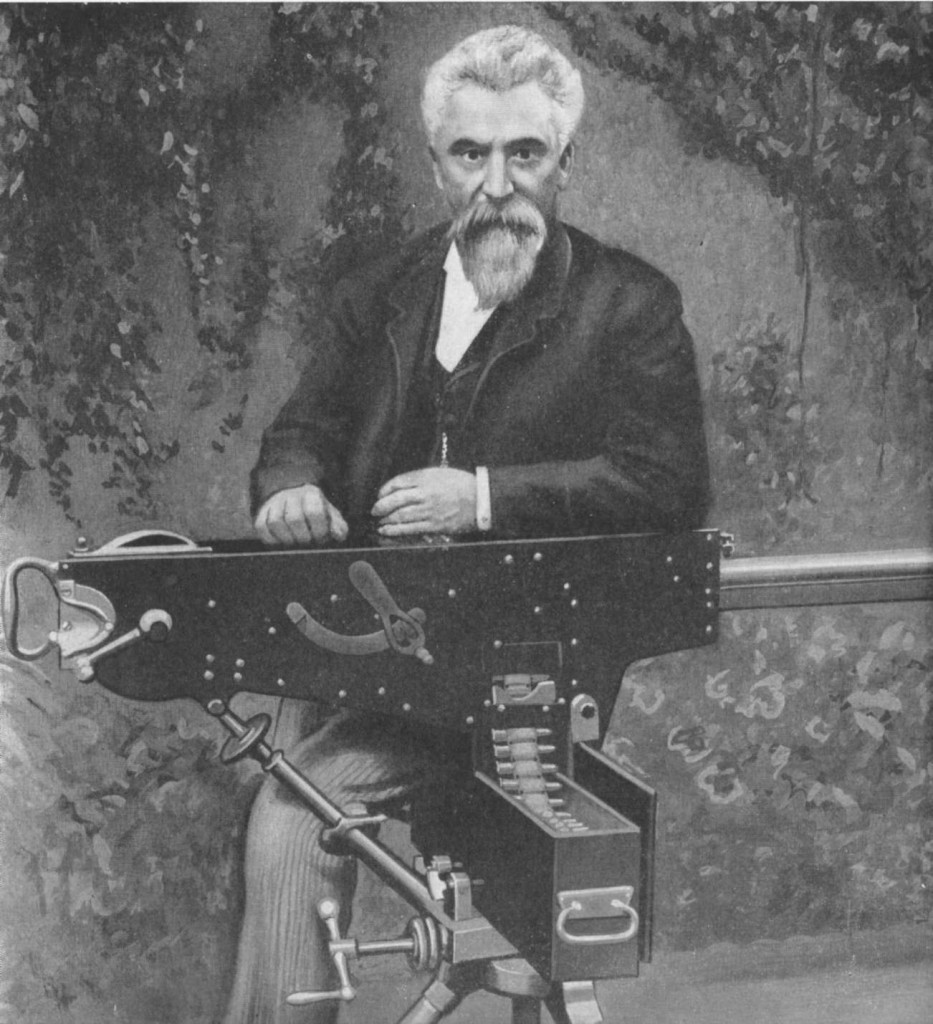
Maxim was also the first person to build a water jacket around his gun’s barrel to keep it cool, after noting that water acts as a much better heat sink than steel (which is to say, it takes more thermal energy to raise the temperature of water than it would to raise the same mass of steel by the same number of degrees).
Maxim made a couple examples of the Prototype gun once he deemed the action reliable and durable, and then proceeded to widely announce his creation in the press, where it receiver much acclaim.
Normally I would need to spend a lot of time trying to explain the details of the action of the Prototype, but in this case we are lucky to have a computer-animated model available which does a fantastic job showing all the elements of the gun. I don’t know the person who put this model together, but they did outstanding work (and did it for several other guns as well):
It is worth noting that this gun was designed and publicly demonstrated in 1884 – still a year before the invention of smokeless gunpowder. All of Maxim’s work on these guns was done with the black powder .45 Gardner-Gatling cartridge (485-grain bullets over 80 grains of black powder), which makes his feat of a reliable machine gun even more impressive. In fact, Maxim filed additional patents around this time for devices to filter smoke particulates and do other things in an effort to ameliorate the problems of black powder in repeating arms. These would be rendered moot by the smokeless powder that was just around the corner, though.
In order to best exploit the automatic fire his gun was capable of, Maxim also had to develop a feed mechanism more sophisticated than the vertical feed towers of Gatling and Gardner manual guns. He actually developed two such systems; a belt feed and a drum feed. The drums were to sit atop the gun, and mechanically were quite similar to the Lewis drums that would come decades later. However, he decided the belt feed was more practical, and perfected it while abandoning the drum feed.
Ultimately Maxim fired more than 200,000 rounds of ammunition through the Prototype guns with minimal serious problems – quite the achievement! The gun’s size (just over 5 feet long) and complexity made it unlikely to win military interest, however. Maxim would take the advice of his friend Sir Andrew Clark (Inspector-General of Fortifications for the British government) and return to the drawing board until his gun could be disassembled completely without tools in mere seconds. We will look at those changes in the next episode of the Maxim story…
